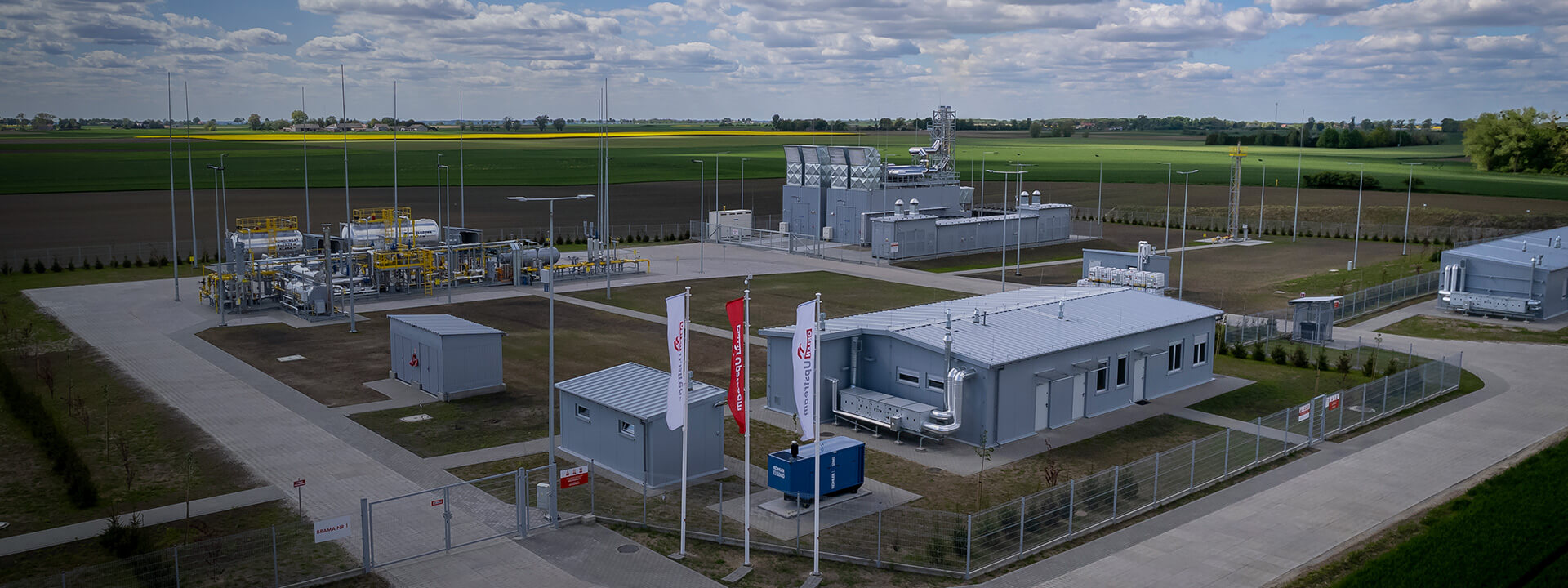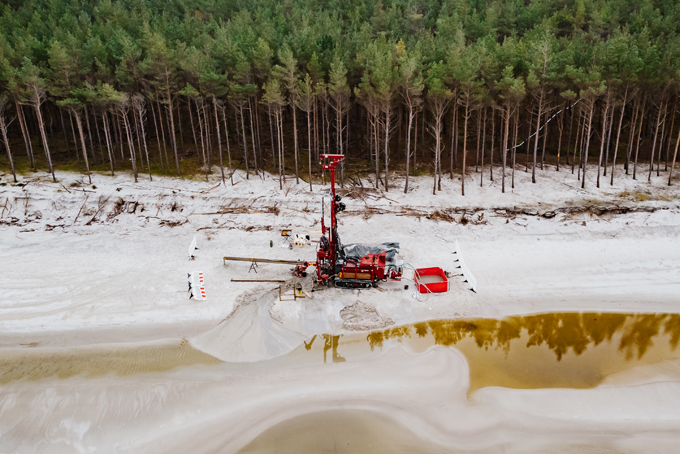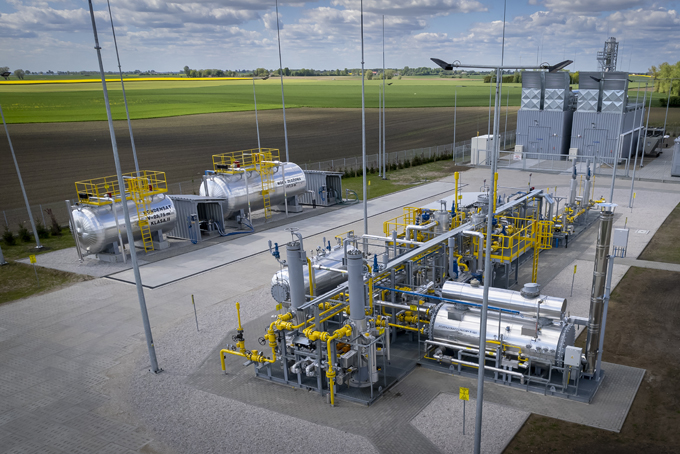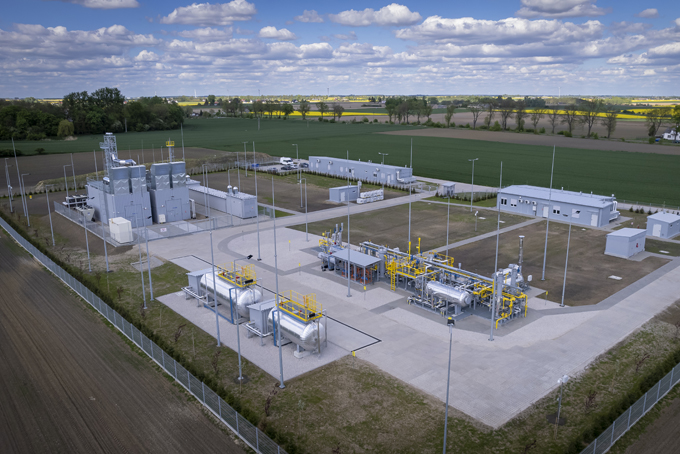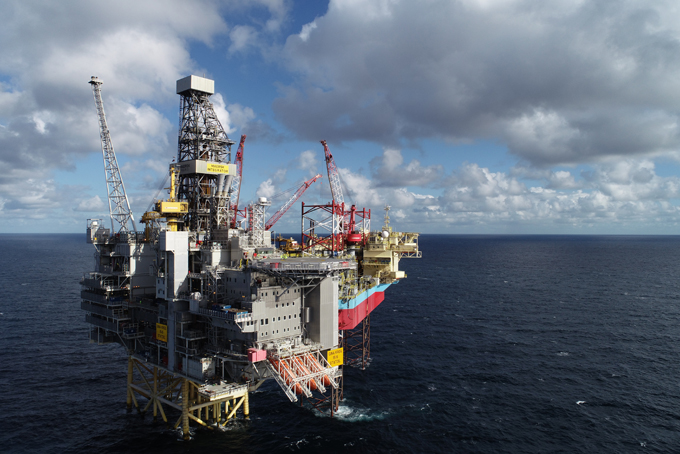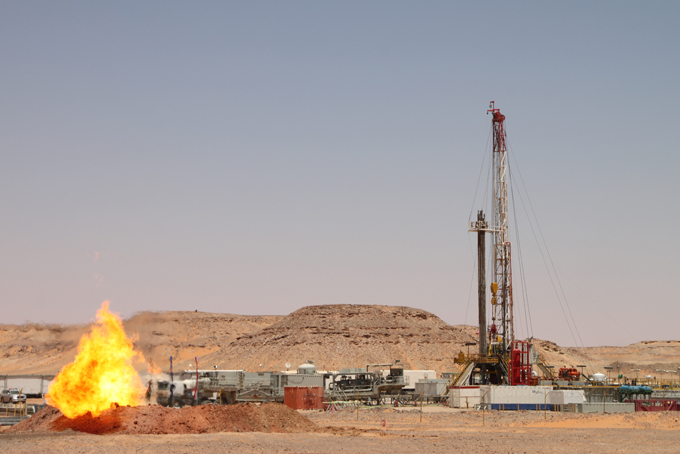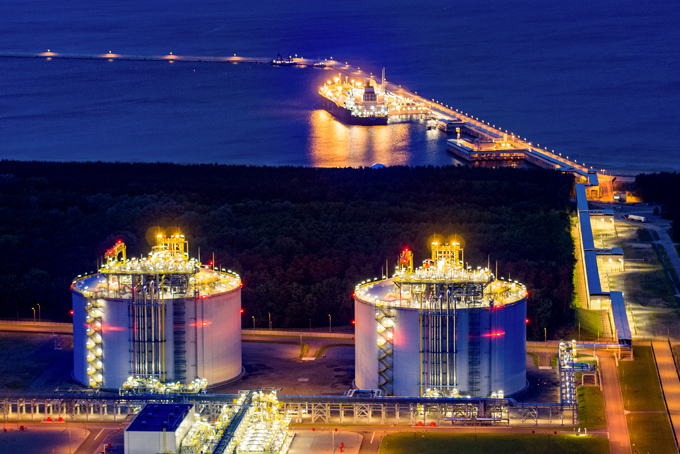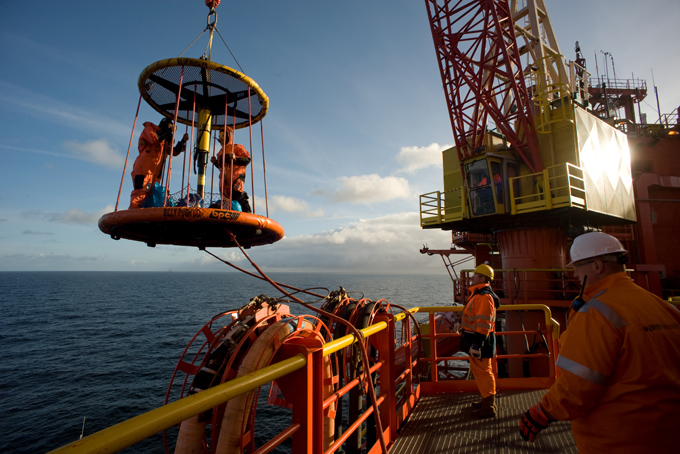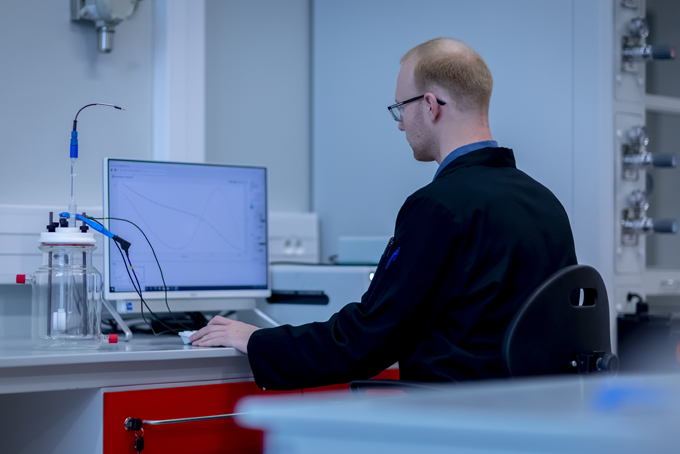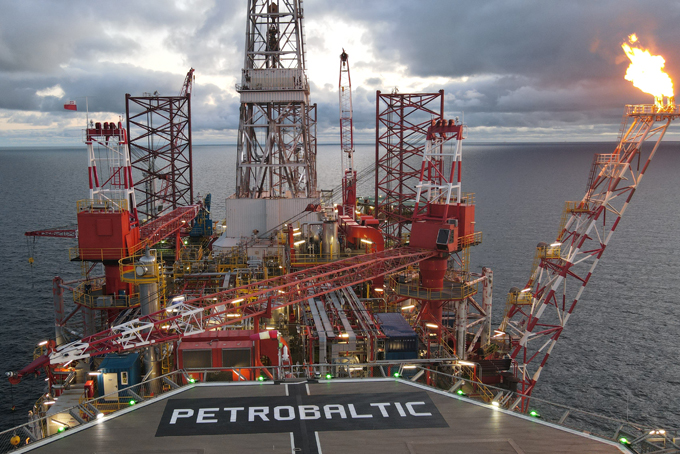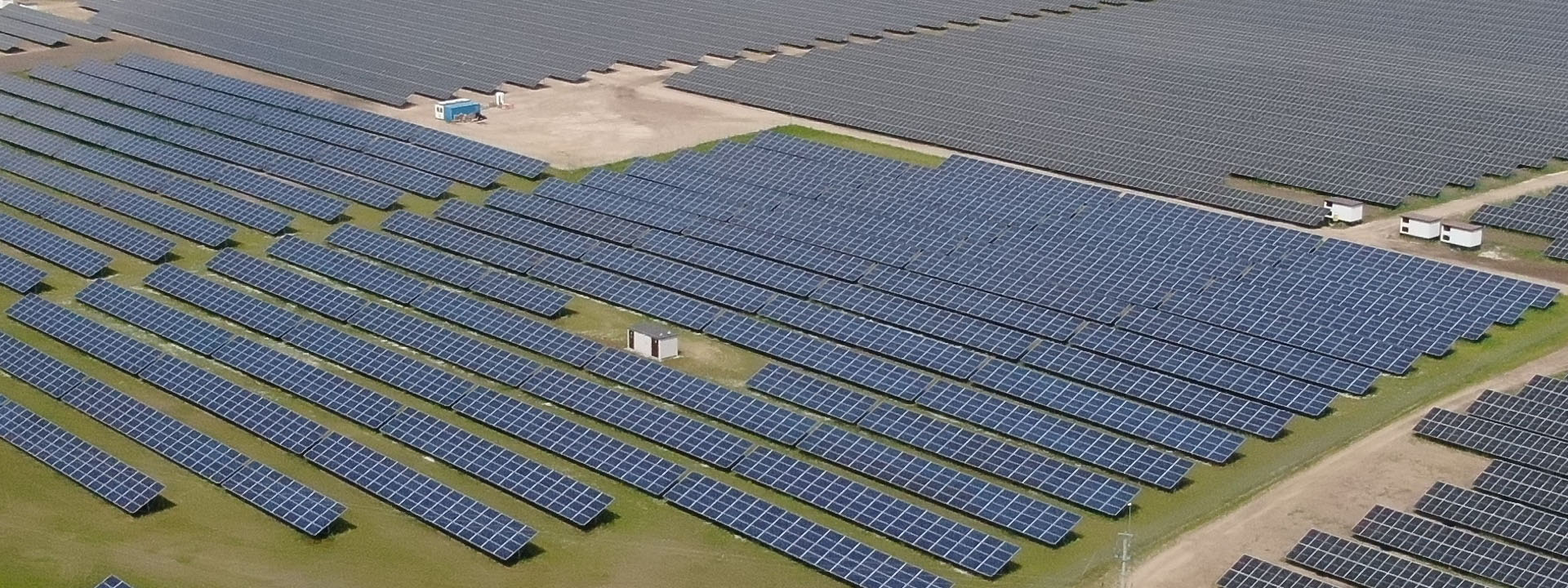Upstream
Operations in Poland
Operators exploring for and appraising hydrocarbon deposits, and producing hydrocarbons from fields in Poland are mainly companies majority-owned by the Polish state. The leader in this sector is the ORLEN Group, which, after the merger with the former LOTOS and PGNiG Groups:
- conducts exploration and appraisal work over an area of 53 licences (in the case of 6 of them investment decisions have been issued, which are the basis for starting the production phase), accounting for 80% of all licences for exploration for and appraisal of crude oil and natural gas deposits issued in Poland as at the end of 2022;
- holds a total of 185 licences for oil and gas production, or more than 98% of all licences issued for the production of hydrocarbons from deposits in Poland as at the end of 2022.
The companies of the former LOTOS Group are leaders in exploration and production within the Polish zone of the Baltic Sea. All three combined licences for offshore hydrocarbon exploration, appraisal and production in the Łeba, Rozewie and Gotland areas, and all four licences for hydrocarbon production from the B3, B8, B4 and B6 oil and gas fields in the Polish Economic Zone of the Baltic Sea have been issued to subsidiaries of the former LOTOS Group and their joint ventures.
Companies holding hydrocarbon exploration and appraisal licences and hydrocarbon production licences
as at December 31st 2022.
Key assets (production volumes and licences)
Exploration and production activities of ORLEN Upstream Sp. z o.o.
In 2022, ORLEN Upstream Sp. z o.o.'s operations comprised hydrocarbon production, exploration for hydrocarbon deposits, and generation of electricity (from nitrogen-rich gas produced in the Edge project).
At the end of 2022, the ORLEN Upstream Group held, on its own or with PGNiG as a partner (part of the ORLEN Group since November 2022), 12 exploration and appraisal licences in Poland, covering a total area of almost 8.1 thousand km2 and spread over six provinces, with 2P reserves of 7.4 mboe. The ORLEN Upstream Group holds 100% interests in 7 licences, 49% interests in 3 licences, and 49% interests in parts of 2 licences within a separate licence area.
Currently, ORLEN Upstream produces gas from domestic sources on its own (in the Bystrowice field and the Bajera and Tuchola fields) or in cooperation with PGNiG S.A. (the Płotki project). The ORLEN Upstream Group's average annual hydrocarbon output in Poland totalled 1.3 thousand boe/day (including gas volumes used to generate electricity).
The main project activities in Poland were conducted in three oil provinces. In the Kraków Oil Province, work was ongoing under two projects. Activities under the Miocen project included optimisation of the production unit at the Bystrowice Gas Production Facility, and an analysis of the resources and feasibility of gas production from the Pruchnik-OU1 well. As part of the Karpaty project, an analysis of seismic and well data was continued. In addition, the administrative procedure to extend the exploration and appraisal phase on licence block 435 was completed.
In Q2 2022, a decision was made to relinquish the Skołyszyn licence as there was no business rationale for continuing exploration work in that area.
Under the Edge project in the Gdańsk Oil Province, work was finalised on the launch of production from the Bajera and Tuchola fields based on electricity generation using nitrogen-rich natural gas The oil production and power infrastructure were being synchronised. By the end of Q1 2022, the productivity of both production centres reached the target level As part of exploration work, the Rosochatka-OU1 well was drilled (licence commitment for the Bysław-Wudzyń area), Leading to the discovery of a non-commercial accumulation of natural gas with hydrogen sulfide content.
Following completion of the interpretation of the Koczała-Miastko 3D seismic data (Brda-Rzeczenica and Tuchola N licence areas), a decision was made to continue analysis through combined reprocessing of the acquired geological information and data from an archival Rzeczenica 3D seismic image. The task was completed in 2022. During the year, work was ongoing on the documentation related to legal and licensing requirements for the company’s exploration and production areas. The ORLEN Upstream team also analysed the technical and economic assumptions to assess prospects for future exploration work in the Edge project.
In the Poznań Oil Province, work was ongoing on two projects implemented under a Joint Operations Agreement with PGNiG S A acting as the operator As part of the Płotki project, drilling of the Miłosław-7H appraisal well on the Miłosław E field continued and was completed in the first half of 2022 Following production testing and update of the technical and economic assumptions, a decision was made to proceed with the well development.
In the second half of 2022, drilling work on the Rogusko-1K exploration well confirmed the presence of hydrocarbons. An initial economic analysis performed after the production testing was completed and the structural map was updated indicates that the discovered accumulation has commercial potential. During the year, work was continued on the development of deposits discovered in previous years, i.e. Chwalęcin-1K and Grodzewo-1, and activities were undertaken to maximise recovery from the producing Karmin and Winna Góra fields. In addition, in 2022 work was ongoing on the documentation related to legal and licensing requirements for the company’s exploration and production areas, and the technical and economic assumptions for future tasks planned under the Płotki project were analysed.
In June 2022, PGNiG S.A., the project operator, applied for a decision declaring expiry of the Jarocin-Grabina combined licence for exploration, appraisal and production.
In the Sieraków project, work was launched to develop the Sieraków field, which will be accessed through the Sieraków-2H well.
In 2022, the contractor was selected to update the technical and formal and legal documentation, develop the functional plan (description of the planned project and the services to be provided), and obtain the environmental decision.
ORLEN Upstream Group's hydrocarbon exploration and production projects Poland.
Exploration and production activities of the former LOTOS Group
The exploration and production activities of the former LOTOS Group in Poland are carried out through two companies, LOTOS Petrobaltic S.A. and LOTOS Upstream Sp. z o.o., as well as their subsidiaries and jointly- controlled entities. The main area of activity is the Polish zone of the Baltic Sea, where exploration and production activities are carried out jointly within 7 licence areas, including 3 offshore oil and gas exploration, appraisal and production licences covering the Łeba, Rozewie and Gotland areas, and 4 offshore licences for the production of hydrocarbons from the B3, B8, B4 and B6 fields.
In 2022, the former LOTOS Group’s average daily hydrocarbon production in Poland was 5.8 thousand boe/day (up by 1.4% year on year), accounting for 35.4% of the former LOTOS Group’s total production volume. Oil was produced from the B3 and B8 fields in the Baltic Sea.
As at the end of 2022, the former LOTOS Group’s 2P hydrocarbon reserves in Poland totalled 31.0 mboe (including 28.4 mboe of crude oil and 2.6 mboe of natural gas), representing 35% of the former LOTOS Group’s total 2P reserves.
In parallel with its exploration and production operations in Poland, in 2022 LOTOS Petrobaltic continued its development initiatives aimed at diversifying its activities and sources of revenue. The possible options include: entry into the offshore wind farm market possibility of launching projects involving carbon dioxide geo-sequestration, hydrogen production, and the possibility of building a wind turbine to power the company’s production centre.
The key licence assets of the former LOTOS Group in Poland include:
- the B3 producing field: in 2022, the average daily output of crude oil and associated natural gas was 2.1 thousand boe/day (down by 6.5% year on year). As at the end of 2022, the B3 field's remaining recoverable 2P reserves were estimated at 5.6 mboe. Based on the current licence validity date, production from the field is expected to continue until 2031.
- B8 producing field: in 2022, the average daily output of crude oil and associated natural gas was 3.6 thousand boe/day (up by 6.8% year on year). As at the end of 2022, the B8 field’s remaining recoverable 2P reserves were estimated at 25.4 mboe. Based on the current licence validity date, production from the field is expected to continue until 2036.
- B4 and B6 gas fields – the fields are being prepared for development. The project is being delivered through special purpose vehicles Baltic Gas Sp. z o.o. and Baltic Gas Sp. z o.o. i wspólnicy Sp.k. in partnership with CalEnergy Resources Poland Sp. z o.o. LOTOS Upstream holds a 51% interest in the project. The 2C (contingent) recoverable reserves of the B4 and B6 fields are estimated at 4.8 bcm of gas (100% interest). A final investment decision (FID) for the project is under way.
In 2022, LOTOS Petrobaltic carried out a project designed to integrate all geological data obtained from drilling wells, laboratory testing and seismic surveys. To meet licence commitments, it completed analytical and interpretative activities to develop a regional structure and tectonic model for the offshore part of the Baltic Basin. The project involved interpretation of the main seismic horizons and amplitude analysis of the processed seismic data using new attribute calculation algorithms. In order to optimise the identification of future locations of exploration wells, additional work was carried out, including the paleo-structural analysis, analysis of fault integrity, and construction of a spatial petrophysical model. In addition to the analysis of traditional structural and structural-tectonic hydrocarbon accumulation traps, the exploration work focused on identifying potential lithological reservoirs that may indicate the presence of large hydrocarbon accumulations.
In the second half of 2022, a project was launched to drill the B101-1 exploration well, up to a maximum depth of 2,300 m, in the Łeba licence area to meet licence commitments. The principal goal is to discover hydrocarbon accumulations in the main reservoir layer (Middle Cambrian sandstone) and to test the hydrocarbon saturation of the drilled lithostratigraphic profile. Another goal in drilling this well is to examine the depth of and lithological formation of the top parts of Precambrian formations (crystalline basement).
In 2022, LOTOS Petrobaltic ended its cooperation with the Institute of Geological Sciences of the Polish Academy of Sciences under an agreement for the analysis of petroleum systems of the Baltic shelf. The purpose was to obtain results for the region, including an assessment of the petroleum potential in two areas with different geological characteristics in order to reduce the exploration risk in the company's current areas of activity, and potential expansion of the project’s scope to cover the whole area of the Baltic basin up to the areas of Lithuania, Latvia, Estonia and Sweden.
The results of the completed analysis and modelling work indicate that the petroleum potential for generation of hydrocarbons from the source rock of the Baltic Sea basin is much larger than the discovered and documented hydrocarbon volumes, as well as the volumes of mapped prospects.
Licences held by companies of the former LOTOS Group in Poland.
Source: In-house analysis
Exploration and production activities of the former PGNiG Group
The exploration and production activities in Poland are carried out by the PGNiG Branch Complex that is a part of the ORLEN Group, and the subsidiaries EXALO Drilling and Geofizyka Toruń. ORLEN’s PGNiG Geology and Hydrocarbon Production Branch serves as the competence centre for geological exploration, geological work, investments in well mining facilities, and hydrocarbon production. It oversees the production of crude oil and natural gas, underground storage of waste, and underground non- reservoir storage of gas for production purposes. The ORLEN’s PGNiG Branch Complex comprises three leading branches located in Sanok, Zielona Góra and Odolanów.
As at December 31st 2022, the recoverable reserves of the former PGNiG Group, including reserves covered by geological prospecting documentation as well as clearance documentation submitted to the Ministry of Climate and Environment, pending approval by the Minister, stood at 15.2 million tonnes of crude oil (111.78 mboe) and 90.5 bcm of natural gas, measured as high- methane gas equivalent (583.34 mboe).
As at December 31st 2022, ORLEN held 200 licences, including 188 production licences, 3 underground waste storage licences, and 9 underground gas storage licences. In 2022, three investment decisions were received in connection with proceeding to the production phase at the Dargosław, Koźminiec and Turkowo fields. As at the end of 2022, ORLEN held 43 licences: 10 oil and gas exploration and appraisal licenses and 33 combined licences (for exploration, appraisal and production).
In the reporting period, 4 licences were relinquished (3 combined exploration, appraisal and production licences: Jarocin-Grabina, Lubycza Królewska and Strumień-Kęty, and 1 exploration and appraisal licence: for licence block 438). Due to changes in the corporate structure, the licencing procedure for a new Kłodawa licence area was not completed by the licensing authority. In 2022, 48 procedures were conducted at the Polish Ministry of Climate and Environment for obtaining, amending, or relinquishing licences and approving plans of geological operations. Currently, 12 administrative procedures are still pending.
Exploration and production projects of the former PGNiG Group in Poland.
Source: In-house analysis based on the Geology and Hydrocarbon Production Branch data
In 2022, former PGNiG companies continued crude oil and natural gas exploration and appraisal projects in the Carpathian Mountains, Carpathian Foothills, Przedsudecka Monocline and Polish Lowlands, both on its own and with partners. Out of the 15 boreholes drilled in 2022, the target depth was reached by 12, including: 1 test well, 3 exploration wells, 4 appraisal wells, and 4 production wells.
As at the end of 2022, formation test results were obtained from 14 wells (2 test, 3 exploration, 3 appraisal and 6 production wells). The 12 wells with known formation test results included 9 positive wells (including 3 exploration wells, 1 appraisal well and 5 production wells) and 5 dry wells (including 2 test wells, 2 appraisal wells and 1 production well) that did not yield an industrial flow of hydrocarbons.
In 2022, workovers, formation tests and decommissioning operations were also performed on wells drilled in previous years, including on: 2 test wells (including 1 abandoned well: Kamień Pomorski-8K, and 1 well with completed workover phase: Kramarzówka-3), 6 exploration wells (including 4 abandoned wells, 1 well with completed formation test, and 1 well undergoing test production), as well as 2 appraisal wells (abandoned wells).
In 2022, at the Zielona Góra Branch two new fields: Kamień Mały ( Kamień Mały-1K, Kamień Mały-11K, and Kamień Mały-12K wells) and Koźminiec (Koźminiec-1 well), and 1 well on the Paproć field ( Paproć-66H well) were brought on stream. In total, 5 wells were tied-in in the Zielona Góra area. At the Sanok Branch, 6 new wells in the Przemyśl field (Przemyśl-291K, Przemyśl-292K, Przemyśl-316K, Przemyśl-318K, Przemyśl-308K, and Przemyśl-299K), 1 well (Tarnów-82K) in the Tarnów field, and 1 new field – Rogoźnica (Rogoźnica-5K, Rogoźnica-4K, and Rogoźnica-3K wells) were tied-in. In total, 10 wells were tied-in in the Sanok area in 2022.
In 2022, production from the Jeżowe NW, Kromolice, Stężyca, Roszków, Wola Jasienicka, and Dominikowice-Kobylanka-Kryg-Libusza-Lipinki fields was finished following expiry of the licence.
Oil and gas production sites of the former PGNiG Group.
In 2022, work was continued under ORLEN’s licences in the following areas:
- „Płotki area", where the Rogusko-1K exploration well was drilled; Activities were under way to develop the Grodzewo-1 well; Work was continued to develop the Chwalęcin-1K well;
- „Poznań area, where the Miłosław-7H appraisal well was drilled;
- „Sieraków area, where tests were completed in the Sieraków 2H well.
The key exploration/ appraisal/ upgrade projects in 2022 included:
- drilling of the Lubycza Królewska 2 and Husów 134K appraisal wells;
- upgrade of the Jaksmanice 219, and Tuligłowy 32 wells;
- drilling of the Roszkowo 1, Rogusko 1K, and Sierosław 2H exploration wells.
Key projects completed in 2022 included:
- development of the following wells: Przemyśl 291K, 292K, 316K, 318K – Przemyśl Zachód Gas Production Facility;
- tie-in of the Rogoźnica 3, 4, 5 wells;
- development of the Koźminiec 1 well;
- development of the Kamień Mały field;
- development of the Paproć 66H well.
Operations in Canada
Key assets (production volumes and licences)
In Canada, production operations are carried out via the subsidiary ORLEN Upstream Canada Ltd. (‘OUC’). In Alberta, Canada, the ORLEN Group is a recognised operator and holds exploration and production assets covering a total area of approximately 352.8 thousand acres (approximately 1.4 thousand km2) gross, and approximately 231.1 thousand acres (approximately 0.9 thousand km2) net, i.e. calculated based on the size of interests, and with 2P reserves totalling 158.0 mboe.
The company's principal hydrocarbon assets are located in Kakwa, Ferrier and Lochend in the Province of Alberta, western Canada, and include primarily unconventional tight oil and tight gas projects, where production is carried out with the use of horizontal wells and multi-stage hydraulic fracturing technology. The fields are mainly located in the Montney (Kakwa area) and Cardium (Ferrier and Lochend areas) geological formations, which are considered some of the best unconventional oil and gas formations in North America.
In the Kakwa area, OUC produces gas with oil condensate, in the Ferrier area – gas with a high content of natural gas liquids (NGLs) and oil, and in the Lochend area – oil with gas. The high output of condensate which, unlike other hydrocarbon feedstocks, is in high demand in the local market, is a source of material profits to OUC. The significant diversity of hydrocarbons produced in various regions provides the company with the flexibility to adapt to changing market trends. The assets in the Kakwa area are characterised by very high production well yields, while the assets in the Ferrier and Lochend areas offer low costs of well drilling and development and hydrocarbon production, with relatively high production volumes. In addition to those key assets, OUC owns a number of smaller production projects and licences located in various areas, including in the Province of Alberta and the Province of New Brunswick.
The characteristics of the ORLEN Group’s production assets in Canada, i.e. unconventional deposits of hydrocarbons with different compositions, short project cycles, high output levels in the first months of production, and short payback periods, make it possible to respond quickly and effectively to shifts in the macroeconomic environment, which was highly favourable for oil and gas producers in 2022. As a result, in 2022 the ORLEN Upstream Group decided to accelerate and significantly increase the scope of the drilling work programme. In the majority of cases, the projects were executed with the company as the operator.
The 2022 capital expenditure programme focused on further drilling work in the key producing areas OUC’s portfolio, namely Ferrier, Kakwa and Lochend. All of the wells drilled were horizontal production wells that are typically subjected to multi-stage hydraulic fracturing prior to production commencement. The company uses state-of-the-art drilling and field development technologies, which enable it to drill horizontal wells of more than 6.5 thousand m in total length and perform 150 fracturing sections in a single well. Combined with the high reservoir parameters of the assets, those technologies ensure very good production results and maintaining cost effectiveness.
In the Ferrier area, drilling of 11 wells (9.00 net) was commenced and 10 wells (7.00 net) were fractured and tied-in.
In the Kakwa area, drilling of 1 well (0.8 net) was commenced and fracturing operations were carried out, after which 3 wells (2.25 net) were tied-in to production facilities. Drilling of those 3 wells had commenced as part of the accelerated drilling programme in Q4 2021.
In the Lochend area, drilling of 2 wells (1.50 net) began. Fracturing operations were also carried out, and a total of 4 wells (3.50 net) were tied-in, of which 2 had been drilled as part of the accelerated drilling programme in Q4 2021.
Fracturing and production launch activities at the locations covered by the 2022 drilling programme, in addition to the planned development of additional sections, are included in the company’s 2023 investment project budget.
Apart from drilling and fracturing operations, work was carried out to optimise production and reduce operating expenses, for instance by installing dedicated downhole equipment and performing various production enhancement operations in the existing production wells in the Kakwa, Ferrier and Lochend areas.
In the Ferrier/Strachan area, the field infrastructure was upgraded by adapting the systems at the 4-13-39-9W5 site to process larger gas volumes, and by replacing the gas compressor at the 9-26-38-8W5 with one with a higher capacity. Those measures are intended to increase the capacity of the systems, which will enable transmission of larger output volumes from new production wells in the Strachan area, and reduction of the cost of production from some of the wells in that area which had been previously connected to the infrastructure of other companies. In addition, they will support maintaining production from some older wells in a declining production phase.
In the Kakwa area, the ORLEN Upstream Group carried out deep cut processing, which helped increase total production volumes and the share of liquid fraction, with a positive effect on the operating margin.
In all areas, pro-environmental measures were continued to reduce greenhouse gas emissions and meet all environmental requirements of the Federal Government of Canada and the Provincial Government of Alberta, including by reducing flaring, preventing methane emissions, conducting regular inspections and infrastructure adaptation projects, and upgrading equipment with an effect on emission volumes.
In addition, work was carried out to convert control systems to run on electricity. Due to supply interruptions and limited availability of equipment, the progress of work as at the end of 2022 was 90%, and the project will be continued in 2023.
In 2022, the average output was 15.6 thousand boe/day, of which approximately 50% were liquid hydrocarbons, i.e. crude oil and NGL, including condensate (produced in the Kakwa area), which had the largest share in revenue and profit from production.
Good reservoir properties of OUC assets and their location in a well- surveyed and developed area minimise the operational risks of the projects. The Western Canadian upstream market where the majority of OUC assets are located is a very mature one. With thousands of discovered and appraised diverse oil and gas reserves, several hundred thousand drilled oil and gas wells, a multitude of different types of production and exploration activities, and regulations supportive of oil operations, the region is covered by numerous high-quality geological surveys and offers easy access to specialist data and expertise for exploration and production activities, which significantly reduces the geological and operational risks.
Furthermore, an extensive local oil and gas infrastructure, coupled with a dense network of pipelines, and a rich, competitive oilfield services market with access to the latest production technologies, ensures that exploration, development and production operations are conducted in a much faster, cheaper and more efficient way than in most other oil regions of the world. The market also offers a range of operational and cost optimising solutions. On the other hand, the local market is in oversupply and often struggles with capacity constraints of export pipelines carrying hydrocarbons to external markets (located mainly in Eastern Canada and the US). A gradual reduction of the export pipeline capacity constraints and step-by-step expansion into new hydrocarbon sales markets are expected within the next few years.
Seeking to achieve operational synergies and focus its investment projects on the most profitable areas, ORLEN Upstream Canada is keeping a watchful eye on the local market. During the year, selected assets located in OUC’s key business areas underwent a detailed technical and economic analysis. In pursuit of the objectives of its strategy for 2021–2030, the ORLEN Group carried out two small transactions in the Ferrier area, which included sale of an undeveloped area and exchange of assets of lesser importance to OUC for sections with rights to extract hydrocarbons from Cardium formations, which have been systematically developed since the entry into the Canadian market.
ORLEN Upstream Canada holds a 2.3% interest in a Toronto Stock Exchange-listed integrated operator Pieridae Energy, which currently owns conventional gas producing assets (with average production of 37.6 thousand boe/day in the period from January to September 2022 and 2P reserves of 269 mboe at the end of 2021), as well as interests in six gas processing plants and approximately 3,800 km of pipelines in the Province of Alberta.
The assets had been bought by the company from Shell in 2019. Pieridae is also the operator of a project to build a stationary LNG export terminal in Goldboro, in the Province of Nova Scotia, on the east coast of Canada. The final investment decision has not been made yet, although the project is well advanced from a formal and design point of view and is supported by a strong macroeconomic rationale (low gas prices on the local market, high gas prices and growing demand for gas in Europe). Pieridae is currently considering installing a smaller floating LNG terminal at the same location.
Assets in Canada.
Source: In-house analysis.
*The main oil and gas assets in Alberta Province were increased to better illustrate the distribution of individual sections.
Operations in Norway
As at the end of 2022, 39 exploration and production companies were active on the Norwegian Continental Shelf, including: 18 companies as a licence operator, and 21 companies as a non-operator . In recent years, the number of active market players has declined due to the ongoing asset consolidation processes (from the record-high number of 56 companies active in 2013). The leading position on the Norwegian Continental Shelf is held by Equinor – as at the end of 2022, it held interests in 280 licences and acted as the operator under 201 licences.
The Norwegian Continental Shelf remains an attractive area for E&P companies, which is due to such factors as the high resource prospectivity, still high potential for new oil and gas discoveries, positive trends in cost reduction, efficiency improvement and development of new technologies, active market, as well as stable fiscal and regulatory environment.
Source: Norwegian Shelf statistics based on publications and data from the Norwegian Petroleum Directorate https://www.norskpetroleum.no/en/facts/companies-production-licence/
Key assets (production volumes and licences)
Exploration and production activities of the former LOTOS Group
Exploration and production activities in Norway are carried out through LOTOS Exploration & Production Norge AS (LOTOS Norge) of Stavanger.
At year-end 2022, LOTOS Norge held interests in 35 licences for exploration, appraisal and production of hydrocarbon reserves in the Norwegian Continental Shelf, compared with 30 licences at the end of 2021. Four new licences were awarded to the company in the 2021 Awards in Predefined Areas (APA) licensing round: PL 1,135 (30% interest, operator: PGNiG with a 70% interest), PL 1,142 and PL 1,143 (17.94% interest, operator: AkerBP with a 73.01% interest) and PL 1,144 (30% interest, operator: AkerBP with a 40% interest). Three of the licences are located in the NOAKA project area, where LOTOS Norge will cooperate with AkerBP. One, held jointly with PGNiG, is located in a part of the North Sea where the company has not yet explored for or produced hydrocarbons. Furthermore, in Q4 2022, the company also obtained a new PL 822S licence (12.3% interest, operator: AkerBP with an 87.7% interest), located in the area of the NOAKA project.
LOTOS Norge has been taking steps to expand its licence portfolio in Norway. In January 2023, the company obtained a 20% interest in licence PL1 175 following the 2022 Awards in Predefined Areas licensing round. The licence operator is AkerBP (50% interest) and the third partner is DNO Norge (30% interest). The licence is located in the NOAKA project area. With the new licence, the Norwegian portfolio of LOTOS Norge will increase to 36 licences.
In 2022, LOTOS Norge, operating as part of a consortium, produced natural gas and condensate from fields located in the Heimdal and Sleipner areas and crude oil from the Yme field. LOTOS Norge’s average production volume in 2022 was 10.0 thousand boe/day (down by 9.9% year on year), corresponding to 62% of the former LOTOS Group’s total production volume.
The remaining 2P recoverable reserves of LOTOS Norge are estimated at 56.0 mboe as at December 31st 2022 (including 37.1 mboe of crude oil and 19.0 mboe of natural gas), representing 63% of the former LOTOS Group’s total 2P reserves. The significant increase in 2P reserves relative to the end of 2021 (by 33.0 mboe) follows from the reclassification of recoverable reserves in the NOA/Fulla and Trell/Trine areas to 2P after investment decisions were made in 2022 to develop fields in those areas.
Besides hydrocarbon production, in 2022 LOTOS Norge carried out new field development work in Norway, including in particular development of the Yggdrasil (formerly NOAKA) and Tyrving (formerly Trell/Trine) fields.
In 2023, ORLEN, as the owner, plans to consolidate the Norwegian exploration and production assets of LOTOS Norge and PGNiG Upstream Norway. The proposed consolidation process will make it possible to meet regulatory requirements and to achieve a range of business synergies. The entity formed as a result of the consolidation will be one of the eight largest players on the Norwegian Continental Shelf.
The LOTOS Norge’s key licence assets in Norway include:
- producing fields in the Heimdal area: Atla (20% interest), Skirne (30% interest), Vale (25.8% interest) and Heimdal (5% interest). The remaining 2P reserves in the Heimdal area were estimated at 0.2 mboe as at December 31st 2022 (LOTOS Norge’s interest). The company’s average production from Heimdal fields was 1.7 thousand boe/day in 2022 (down by 16.7% year on year). The Heimdal field is currently in the final production phase, before decommissioning;
- Utgard producing field (17.36% interest), where production is supported by the Sleipner area infrastructure. The field’s 2P reserves are estimated at 0.3 mboe as at December 31st 2022 (LOTOS Norge’s interest). The company’s average output in 2022 was 1.2 thousand boe/day (down by 42.1% year on year). The Utgard field has seen a strong downward trend in recovery rates, due to high volumes of water in the production wells;
- producing fields in the Sleipner area, namely Sleipner Vest and Sleipner East, with Gungne and Loke satellite fields (15% interest). The remaining 2P reserves in the Sleipner area are estimated at 8.2 mboe as at December 31st 2022 (LOTOS Norge’s interest). The company’s average production from Sleipner fields was 5.3 thousand boe/day in 2022 (down by 23.7% year on year). The lower production volume was caused by a compressor failure and limited capacity in the period from March to October 2022. On October 31st 2022, the compressor was replaced and since November 1st the Sleipner field has operated at full capacity, with an average output of some 8 thousand boe/day (LOTOS Norge’s interest). The Sleipner fields are in a mature production phase. Production is planned to continue until 2032, with the production period possibly to be extended until 2040;
- Yme field (20% interest), with remaining 2P reserves estimated at 9.4 mboe as at December 31st 2022 (LOTOS Norge’s interest). Compared with the end of 2021, 2P reserves in the Yme field decreased by approximately 2.4 mboe for LOTOS Norge's interest as the reservoir water volumes proved higher than estimated and a decision was made to shorten the production period. The company’s average production from the Yme field in 2022 was 1.8 thousand boe/day. The production started in October 2021. In 2022, additional production and injection wells were drilled to bring the field to full production capacity. The target output (after full capacity is reached) from the Yme field is approximately 5 thousand bbl/day (LOTOS Norge's interest);
- new development project Yggdrasil (formerly NOAKA), Involving the development of fields in the area of North of Alvheim (Frigg Gamma Delta, Langfjellet, Rind and Froy), Fulla and Lille-Frigg, as well as Krafla and Askja fields. LOTOS Norge's effective interest in eight licences in the NOA/Fulla area is 12.3%. The project is being prepared for the implementation phase. In December 2022, the Plan for Development and Operation for the NOAKA area was submitted for approval by the Norwegian authorities. Yggdrasil is one of the largest projects currently carried out on the Norwegian Continental Shelf, with a value of approximately NOK 115 billion and potential resources of over 500 mboe for the entire NOAKA area (for 100% interest). 2P reserves attributable to LOTOS Norge’s interest are estimated at 35.2 mboe. Production is scheduled to commence in 2027;
- new development project Tyrving (formerly Trell/Trine). LOTOS Norge's interest is 11.9%. The project involves the development of discovered fields in the Heimdal area and is currently being prepared for the implementation phase. In August 2022, the Plan for Development and Operation of the Trell/Trine fields was submitted for approval by the Norwegian authorities. 2P reserves attributable to LOTOS Norge’s interest are estimated at 2.6 mboe. Production is scheduled to commence in 2025.
- In addition to its interests in the fields, LOTOS Norge also holds interests in the Heimdal (5%) and Sleipner (15%) gas and condensate processing and transport centres (gas hubs). It is worth noting that the Sleipner area is of strategic importance to gas exports from Norway to Central Europe and the United Kingdom.
Licences held by LOTOS Exploration & Production Norge AS as at December 31st 2022.
Source: The Company
Exploration and production activities of the former PGNiG Group
The ORLEN Group operates on the Norwegian Continental Shelf through PGNiG Upstream Norway (‘PGNiG UN’), and holds interests in production licences and exploration and production licenses in the Norwegian Sea and the North Sea. Together with its partners, the company is producing hydrocarbons from the Skarv, Ærfugl, Ærfugl Nord, Morvin, Vilje, Vale, Gina Krog, Skogul, Kvitebjørn, Valemon, Duva, Ormen Lange, Marulk and Alve fields. In addition, it participates in the third development phase of the Ormen Lange field and in the development of six further fields: Tommeliten Alpha, Fenris, Alve Nord, Verdande, Andvare and Ørn fields; PGNiG UN also holds interests in the Tambar Øst field, from which production has temporarily been suspended, and the Nyhamna terminal, where gas is finally separated from the well streams of Ormen Lange and other fields. Within the other licence areas, the company is engaged in exploration projects and takes steps to ensure stable and predictable long-term gas supplies to Poland. These efforts include involvement in the construction of infrastructure between Norway and Poland (the Baltic Pipe project), and also potential acquisitions of gas fields in Norway.
In 2022, the company produced a total of 886 thousand tonnes of crude oil with condensate and NGL, measured as tonnes of crude oil equivalent, and 34.55 Twh of natural gas from its producing fields. Output from the fields grew year on year following the acquisition of INEOS E&P Norge in 2021 and a change in the production strategy for the Skarv and Gina Krog fields, which led to an increase in gas production.
In 2022, the development of five new fields commenced. The operator of three of them (Alve Nord, Ørn and Fenris) is AkerBP. In addition, PGNiG Upstream Norway’s partners on the Alve Nord and Ørn fields are WintershallDEA and Equinor, respectively. Total reserves in those fields attributable to PGNiG UN are estimated at some 77 Twh of natural gas and 19.9 mboe of crude oil and gas condensate. The company’s capital commitment on the development projects in those fields will reach PLN 1.3 billion. The production is expected to start in 2027.
The operator of the other two fields where development work commenced in 2022 (Verdande, Andvare) is Equinor. Total reserves if those fields attributable to PGNiG UN are estimated at 2.2 Twh of natural gas and 0.6 mboe of crude oil and gas condensate.
In August 2022, a transaction to purchase interests in the Ørn gas field in the Norwegian Sea from Wellesley Petroleum was completed. The field will provide the ORLEN Group with an additional 3.3 TWh of natural gas annually as of 2027.
Ørn is located approximately 20 km from the Skarv field, in which PGNiG UN also holds interests. This will enable the use of the existing production infrastructure, including the Skarv FPSO (floating production, storage and offloading) unit, to reduce the time and costs of production launch. In order to increase the profitability of production, PGNiG UN applied this solution also in other fields located in the Skarv area, i.e. Ærfugl and Gråsel. In addition, the use of the existing infrastructure will reduce CO2 emissions related to field development.
The Ørn field operator is AkerBP, with a 30% interest. The second partner is Equinor Energy, also holding a 30% interest.
In 2022, documented reserves decreased slightly, from 309 mboe to 290 mboe at year-end, Which was attributable to hydrocarbon production in 2022 (26.2 mboe) and suspension of further activities on the Fogelberg field. On the other hand, there was an increase as a result of an upward revision of resources in other fields and the acquisition of interests in the Ørn field.
In January 2022, another licensing round APA 2021 (Awards in Pre-defined Areas) was concluded, as a result of which PGNiG UN obtained interests in four exploration licences:
- licence PL941B (extension of the 941 licence area), located near the Skarv field. The licence operator is Aker BP (80%), with the remaining interest held by PGNiG UN (20%). The consortium has two years for a drill-or-drop decision;
- licence PL1055C, an extension of the PL1055 and PL1055B licences, located near the Ormen Lange field. The licence operator is PGNiG UN (holding a 60% interest) and Shell is the sole partner (with a 40% interest). All the three licences: PL1055/PL1055B/PL1055C are part of the Tomcat prospect;
- licence PL1135, in which PGNiG obtained a 70% interest, located in the North Sea, some 45 km east of the King Lear field. PGNiG UN will act as the operator, with LOTOS Norge as the sole partner. The interest holders have two years to decide whether to drill an exploration well;
- licence PL1136, in which PGNiG obtained a 50% interest, located in the south-eastern part of the North Sea. PGNiG UN acts as the operator, with Equinor as the sole partner (50% interest). The interest holders have one year to decide whether to drill an exploration well.
All four licence areas are located close to the existing production and pipeline infrastructure, so if a decision to proceed with their development is made, the process will be simpler and faster. The licences are also located in the immediate vicinity of the fields where PGNiG UN is already present (Skarv, Ormen Lange and King Lear). In case of commercial discoveries, potential connection of the licence areas to existing fields would offer synergies from incremental revenue derived from the provision of access to the existing infrastructure of the Skarv and/or King Lear fields.
Licences held by LOTOS Exploration & Production Norge AS as at December 31st 2022.
In January 2023, another licensing round APA 2022 (Awards in Pre-defined Areas) was concluded, as a result of which PGNiG UN was offered interests in three exploration licences:
- licence PL1172, in which PGNiG UN received a 30% interest. The other two partners are AkerBP (operator) and DNO Norge, holding a 40% interest and a 30% interest, respectively.
- licence PL1190, in which PGNiG UN received a 20% interest. The other two partners are Harbor Energy (operator) with a 50% interest and Lime Petroleum with a 30% interest.
- licence PL1193, in which PGNiG UN received a 20% interest. The licence area is located in the vicinity of the Skarv field. The operator is AkerBP (an 80% interest).
Jointly with its partners, PGNiG UN also continued work in other exploration licence areas. In 2022, the company was involved in drilling five exploration wells. Under the PL941 licence, in which it holds a 20% interest, two exploration wells were drilled and the Newt field was discovered. The field is located 14 km north-east of the Skarv production area and preliminary estimates put its recoverable reserves at between 11 and 36 million barrels of oil equivalent.
In addition, the company drilled four other exploration wells: the second well in the PL941 licence area and wells in the PL209, PL1017 and PL1064 licence areas. The wells did not confirm the presence of commercial accumulations of hydrocarbons.
As at December 31st 2022, PGNiG UN held interests in 62 exploration and production licences on the Norwegian Continental Shelf, in 8 of them as the operator. At the beginning of 2023, the number of licences grew to 65 following the APA 2022 licensing round.
PGNiG Upstream Norway’s fields as at December 31st 2022.
Source: In-house analysis based on PGNiG UN data.
Hydrocarbon reserves on the Norwegian Continental Shelf as at December 31st 2022 [mboe].
Producing fields
The Skarv and Ærfugl fields came on production in December 2012 and 2020, respectively. Both fields are tied back to the Skarv FPSO floating platform, which has a long assumed service life. The platform is an attractive production and transportation hub for further discoveries in the region.
The Gina Krog field is an oil and gas field brought on stream in June 2017. Production is carried out using 14 wells. The field was developed based on the construction of a new offshore rig and use of a 850 thousand bbl floating vessel to store crude oil. From the vessel crude is transported by tankers (with intermediate reloading at sea). Raw natural gas is transmitted to the Sleipner platform, from which it is pumped to the Gassled pipelines. Condensate and NGL are shipped to processing plants in Kårstø, Norway. Given the high gas prices, at the beginning of the fourth quarter of 2021 a decision was made to halt gas injection into the field and increase gas production, which has helped optimise the project’s profitability.
The Vilje field is located in the central part of the North Sea, close to the Alvheim and Heimdal facilities. The field is developed with three subsea wells linked by pipeline to the Alvheim FPSO vessel.
The Vale field is a gas and condensate field discovered in the North Sea in 1991. Despite production stoppages in 2018–2020, an increased output is expected in the coming years, due to investments as part of the Heimdal platform.
The Morvin field, discovered in 2001, in located in the Norwegian Sea. Hydrocarbons are produced through two subsea templates. The field is tied back to the Åsgard B platform.
Skogul is an oil field situated in the North Sea near the Vilje field. The development plan covered drilling one well connected to the subsea facilities of the Vilje field, and then using the existing infrastructure, including the Alvheim FPSO platform. Production commenced in the first quarter of 2020.
The Kvitebjørn field was discovered in 1994 and the decision to develop the asset was made in 2000. Production started in 2004. The development involved construction of a dedicated rig with a permanently drilling unit. This allows more wells to be drilled as part of further development of the field.
The Valemon field was discovered in 1985 and the investment decision was approved in 2011. Production commenced in 2015. The development consisted of erecting an unmanned platform with a simplified separation system. Pre-separated oil and gas are transported to the Kvitebjorn platform.
Duva is an oil and gas field located in the northern part of the North Sea. It was discovered in 2016, the investment decision was made in 2019, and production started in August 2021. The development concept is based on a subsea template with three oil wells and one gas well, tied back to the Gjøa platform. Oil is transported from the Gjøa platform through Troll Oil Pipeline II to the Mongstad terminal, while gas is carried via a pipeline that is a part of the Far North Liquids and Associated Gas System (FLAGS) to the UK St Fergus terminal.
Ærfugl Nord is a condensate and gas field discovered in 2012. The field development decision was made in 2018, and production started in November 2021. The development is based on one well tied back through the Ærfugl gas pipeline to the Skarv FPSO. The condensate output is shipped by tankers directly from the Skarv FPSO, while gas is transferred to the Kårstø terminal.
Ormen Lange is the second largest gas field in Norway, located in the southern part of the Norwegian Sea. The field was discovered in 1997 and the decision to develop the asset was made in 2004. Production started in September 2007. The field development was divided into phases. In 2021, the third development phase was launched, consisting in the installation of compressor units on the seabed to enable more efficient recovery of the field’s reserves in the future. Extracted hydrocarbons are transported to the Nyhamna terminal, where they are separated into gas and condensate.
Marulk is a gas field located in the Norwegian Sea. The deposit was discovered in 1992, the investment decision was made in 2010, and production started in 2012. The field was developed with a subsea template tied back to the Norne FPSO, from which oil is taken by tankers and gas is shipped to the Kårstø terminal.
Alve is a gas and oil field discovered in 1990. The investment decision was made in 2007, and production started in 2009. The development concept is based on three wells connected to a subsea template, as in the case of the Marulk field, tied back to the Norne FPSO.
Tambar Øst is an oil field located in the southern part of the North Sea, about 2 km away from the Tambar field. It was discovered, developed and brought on production in 2007. The development concept is based on one well drilled from the subsea template of the Tambar project. Production from the field was temporarily discontinued, and is currently expected to be resumed in 2024.
Deposits in the phase of development or selection of development concept
Tommeliten Alpha is a gas and condensate discovery located in the North Sea in the immediate vicinity of the Ekofisk field. Its reserves are likely to prove higher than confirmed to date, while the PL044 licence offers considerable potential for further exploration work. According to the current schedule, first oil is expected in 2024.
Fenris (previously called King Lear) is a gas and condensate discovery located in the North Sea. In 2021, a field development concept was selected, which will involve a tie-back to the Valhall platform. In 2022, the final investment decision was made, and production is expected to be launched in 2027.
Alve Nord was discovered in 2011. In 2022, the project operator Aker BP prepared the development concept, and the final investment decision was made at the end of the year. The launch of production is expected in 2027.
Ørn was discovered in 2019, The field is located approximately 20 km from the Skarv field. At the end of 2022, the final investment decision was made, and production is expected to start in 2027.
Verdande (previously called Alve Nord East/Cape Vulture) is a deposit located within the PL127DS, PL128 and PL128D licence areas. PGNiG UN holds interests only in the PL127DS licence. In 2022, the licences were unitised, as a result of which PGNiG UN acquired a 0.83% interest in the project. At the end of 2022, the final investment decision was made, and production is expected to be launched in 2025.
Exploration/appraisal prospects
Lunde is an oil discovery located in the immediate vicinity of the Skarv FPSO. The field was proven using the exploration well drilled in 2019 and operated by PGNiG UN. The operatorship was transferred to Aker BP for the duration of the development phase. At present, work is under way to select the development concept. The final investment decision is planned for 2023.
Warka is an oil prospect located in the immediate vicinity of the Skarv FPSO. The deposit was proven through an exploration well drilled in 2020 by ConocoPhilips. According to preliminary calculations, the recoverable reserves of the Warka field within the PL1009/1009B licence areas are approximately 50–189 mboe. Currently, there are plans to drill an appraisal well to confirm the commercial nature of the discovery.
Egyptian Vulture is a discovery made in 2021 in the vicinity of the Tyrihans deposit. Currently, the possibility of its commercial development is being investigate.
Operations in Lithuania
Key assets (production volumes and licences)
Exploration and production operations of the former Grupa LOTOS Group in Lithuania are carried out through subsidiary, AB LOTOS Geonafta of Gargždai. The company is the parent of another group of companies, comprising:
- UAB Genciu Nafta (100% owned by AB LOTOS Geonafta),
- UAB Manifoldas (100% owned by AB LOTOS Geonafta),
- UAB Minijos Nafta (50% owned by AB LOTOS Geonafta).
The average production volume of the AB LOTOS Geonafta Group in 2022 was 471 boe/day (down by 7.4% year on year), corresponding to 3% of the former LOTOS Group’s total production volume. Production operations were conducted within the following onshore blocks: Girkaliai, Genciai, Kretinga, Nausodis, Klaipeda, and Gargždai. The remaining 2P recoverable reserves of the AB LOTOS Geonafta Group are estimated at 1.3 mboe as at the end of 2022 (100% of crude oil), representing 1% of the total 2P reserves of the former LOTOS Group.
Licences held by the AB LOTOS Geonafta Group as at December 31st 2022.
Source: The Company.
Operations in other countries
Pakistan
Through its Operator Branch, ORLEN is engaged in exploration work in Pakistan under an agreement for hydrocarbon exploration and production in the Kirthar licence area. The work is conducted jointly with Pakistan Petroleum Ltd. (PPL), with production and expenses shared pro rata to the parties’ interests in the licence: ORLEN (operator) – 70%, PPL – 30%. In addition, ORLEN holds a 25% non-operator interest in the Musakhel exploration licence. The other shareholders are PPL as the operator, with a 37.2% interest, as well as Oil and Gas Development Company Limited (OGDCL) and Government Holding Private Limited (GHPL), with 35.3% and 2.5% interests, respectively.
United Arab Emirates
ORLEN's branch in Ras Al Khaimah, United Arab Emirates (RES) has been operating since January 2019 under an Exploration and Production Sharing Agreement signed between PGNiG and the Ras Al Khaimah Petroleum Authority. The agreement authorises ORLEN to conduct hydrocarbon exploration and production activities in Block 5 with an area of 619 km2 in the Ras Al Khaimah emirate. ORLEN is the licence operator with a 90% interest, while 10% is held by the local partner RAK Gas.
Ukraine
In 2021, PGNiG signed an agreement with ERU Management Services providing the purchase by PGNiG of a controlling 85% interest in Ukraine’s Karpatgazvydobuvannya, the sole holder of the Byblivska licence located in Western Ukraine, in an area adjacent to Polish border. Karpatgazvydobuvannya holds a licence to explore for and produce hydrocarbons the western part of the Lviv Oblast. In terms of geology, the area is an analogue of Przemyśl, Poland’s largest natural gas field operated by PGNiG more than 60 years. Its attractiveness and potential have been confirmed through preliminary analyses of geological and geophysical data.
Libya
Due to the deteriorating security situation in Libya, PGNiG Upstream North Africa (PGNiG UNA) declared a force majeure condition with the National Oil Corporation (NOC) in August 2014. Despite the circumstances, PGNiG UNA conducted a number of geological analyses that confirmed the geological prospectivity and high resource potential of the CA113 licence area. Scenarios were also prepared for the development of the field to transfer hydrocarbons from the Mediterranean to the European transmission system via a subsea pipeline.
Sales volumes and services
In 2022, total sales in the ORLEN Upstream Group's markets reached 681 thousand tonnes, having increased by 2% year on year, primarily as a result of the merger with Grupa LOTOS and PGNiG, as well as development of further hydrocarbon fields and launch of generation of electricity from the natural gas produced. Those factors, combined with favourable macroeconomic conditions, translated into a 77% year-on-year growth in the segment's revenue.
Sales volumes of the ORLEN Group Upstream segment [PLNm/ thousand tonnes].
The increase in the ORLEN Group's sales volumes on the Polish market is mainly attributable to the consolidation of volumes sold by the former companies of the LOTOS and PGNiG Groups.
The key products offered in Poland include crude oil and high-methane and nitrogen-rich natural gas. Some of the produced nitrogen-rich gas is further treated into high-methane gas at the Odolanów and Grodzisk Wielkopolski plants, yielding also such products as LNG, gaseous and liquid helium, and liquid nitrogen. Other commercial products, derived from crude purification, include sulfur and propane-butane.
Sales volumes of the ORLEN Group Upstream segment in Poland [thousand tonnes]
On the Norwegian market, in 2022 oil and gas were sold directly from the fields to Shell International Trading and Shipping Company Ltd. (from the Skarv Unit, Vilje, Vale, Skogul, Kvitebjørn, Valemon, Ærfugl Nord and Gina Krog fields), Equinor AS (from the Alve, Marulk and Ormen Lange fields) and TOTSA Total Oil Trading S.A. (from the Morvin field). In addition, natural gas from the Heimdal and Sleipner fields was sold to customers in the United Kingdom, Germany and the Netherlands.
Sales volumes of the ORLEN Group Upstream segment in Norway [thousand tonnes].
In Canada, the ORLEN Group's sales amounted to 625 thousand tonnes, having slightly increased year on year.
Sales volumes of the ORLEN Group Upstream segment in Canada [thousand tonnes].
In 2022, the ORLEN Group also carried out upstream operations through Geofizyka Toruń and EXALO Drilling.
Geofizyka Toruń is a supplier of innovative geophysical, geotechnical, geological and hydrogeological solutions for examining geological structures for the multi-utility and renewable energy sectors in Poland and abroad.
In 2022, the Company provided the following services:
- acquisition of seismic data in Poland, Albania, Croatia, Georgia, Colombia, Mozambique, Germany, Turkey, Hungary, and the United Arab Emirates;
- processing and interpretation of seismic data for customers from Poland, Australia, the Netherlands, Colombia, Germany, Norway, Pakistan, Rwanda, Switzerland, Ukraine, and Hungary;
- well logging services in Poland and interpretation of well geophysical measurements for customers from Poland, Norway, and Ukraine;
- geotechnical, geological and hydrogeological services and engineering geophysics services in Poland, onshore and offshore (in the Baltic Sea).
In connection with its core business, the Group also carried out research and development activities and innovative projects for the multi-utility and renewable energy sectors, For instance implementation of the SeaBed Research (SBR) technology and smart energy management based renewable energy sources. Other innovative projects included a full HD camera for making inspection measurements in boreholes.
In 2022, Geofizyka Toruń performed contracts in Poland mainly for ORLEN’s PGNiG Geology and Hydrocarbon Production Branch, as well as ORLEN Upstream, LOTOS Petrobaltic, EXALO Drilling, Gazoprojekt and Baltic Power. The company also provided services to: Polish Geological Institute – National Research Institute, Polskie Elektrownie Jądrowe Sp. z o.o., Przedsiębiorstwo Budowy Kopalń PeBeKa S.A., Przedsiębiorstwo Geologiczne Geoprojekt Szczecin Sp. z o.o., UOS Drilling S.A., and Zarząd Morskiego Portu Gdynia S.A. In other countries, Geofizyka Toruń worked for the ORLEN Operator Branch in Pakistan and PGNiG Upstream Norway.
In 2022, Geofizyka Toruń completed approximately 879.2 km2 of 3D seismic acquisitions in Poland for the PGNiG Geology and Hydrocarbon Production Branch. In the whole of 2022, the company carried out 595 km of 2D seismic acquisitions and approximately 1,844 km2 of 3D seismic acquisitions.
In other countries, Geofizyka Toruń worked for the ORLEN Operator Branch in Pakistan and PGNiG Upstream Norway. In 2022, Geofizyka Toruń completed approximately 879.2 km2 of 3D seismic acquisitions in Poland for the PGNiG Geology and Hydrocarbon Production Branch.
In the whole of 2022, the company carried out 595 km of 2D seismic acquisitions and approximately 1,844 km2 of 3D seismic acquisitions.
The ORLEN Group’s EXALO Drilling provides well and drilling services, both for the ORLEN Group and for third parties. Being one of the leading European onshore drilling companies, it offers the full range of professional well services.
EXALO Drilling's key contracts in 2022 included:
- for the ORLEN Group: operation of the 2000 KM drilling rig, and provision of oilfield and drilling services, contracts for the ORLEN Branch in Pakistan and the United Arab Emirates;
- for third parties in Poland: drilling of four geothermal wells (Koło GT-2, Dźwirzyno HASTON GT-1, Dźwirzyno HASTON GT-2K, Chochołów GT-1), drilling of the IGNACY well to access a medicinal water source in Ciężkowice, provision of drilling equipment, personnel and selected gas and oil field services for Przedsiębiorstwo Budowy Kopalń PeBeKa S.A.;
- for third parties outside Poland: drilling of wells and well workovers for customers in Pakistan, Tanzania, Zimbabwe, Austria, Ukraine, and Czechia.
In 2022, EXALO Drilling carried out works on 28 boreholes with a total depth of approximately 59.7 km and 63 workover wells.
Logistics assets
Sea logistics services in the Baltic Sea region are provided by the Miliana Shipholding Group. These services include receipt and storage of crude oil in the production area, transport of crude oil from the fields to the port, rescue assistance for the platforms, transport of personnel, equipment and materials as part of current processes and work on the platforms, as well as specialised work related to the replacement of infrastructure on the operated fields.
Crude oil and associated natural gas are produced from the B3 field by entities of the former LOTOS Petrobaltic Group, using the Baltic Beta rig and the PG-1 unmanned drilling rig. All crude oil is transported by tankers to the port and sold to ORLEN S.A. Natural gas is transmitted via a subsea 80 km pipeline to the CHP plant in Władysławowo, owned by Energobaltic Sp. z o.o. (wholly-owned subsidiary of LOTOS Petrobaltic).
In the B8 field, crude oil is produced by the LOTOS Petrobaltic Group, using the Petrobaltic production platform and the LOTOS Petrobaltic drilling rig. All crude oil is transported by tankers to the port and sold to ORLEN S.A. Natural gas is transported via a subsea pipeline to Energobaltic’s CHP plant in Władysławowo.
In 2022, the Petro Giant drilling rig continued workover activities on the B3 field in the Baltic Sea (B3-6 subsea production well, B3-14A production well in the PG-1 unmanned platform area), and at the end of December commenced drilling of B101-1 – the first exploration well in the B101 structure (Łeba licence). The ongoing programme of well workovers in the B3 field an exploration work is designed to maximise recovery rates and enhance production.
In 2022, the fleet of vessels serving the B3 and B8 fields was expanded to include a new anchor handling tug/ supply vessel (AHTS). Purchased through a Miliana Group company, it was placed in service in May 2022.
LOTOS Norge holds interests in licences covering the production infrastructure in the Heimdal and Sleipner fields, including: the Heimdal gas and condensate processing and transport hub (operated by Equinor, with LOTOS Norge holding a 5% interest), and the Sleipner gas and condensate processing and transport hub (operated by Equinor, with LOTOS Norge holding a 15% interest).
Gas produced from the Heimdal and the Sleipner fields is injected into the Gassled pipeline system, and then delivered to off-take points in the UK and continental Europe (the Netherlands, Germany).
Condensate from the Heimdal field is injected into the Forties Pipeline System (FPS), and then delivered to an off-take point at the Kinneil Terminal/Hound Point in Scotland, where it is processed into final products, i.e. Forties Blend crude oil and gas fractions. Condensate from the Sleipner field is transported via a pipeline to an off-take point in Karsto (Norway), where it is processed into final products, i.e. Gudrun Blend light crude and liquid fractions (NGL).
Production from the Yme field will be carried out using the leased Maersk Inspirer platform. The produced crude oil is loaded onto a tanker and transported to various off-take points, depending on the oil parameters and market conditions.
Crude oil from the Lithuanian fields is produced using onshore production infrastructure. Since 2022, is has been transported from the fields to the Klaipeda terminal in Lithuania (until 2022, it was transported to a marine terminal in Liepāja, Latvia). From the Klaipeda terminal, oil is carried by tankers to Gdańsk, where it is processed by the Gdańsk refinery. All associated natural gas is flared.
In 2022, the ORLEN’s PGNiG Branch Complex continued its sales policy by supplying crude oil and gas to the largest fuel sector players in Poland and abroad.
In Poland, crude oil is carried by rail, road transport and pipelines. Rail transport is used to supply the feedstock to the ORLEN Południe refinery in Trzebinia and to the Gdańsk refinery, while the ORLEN Południe refinery in Jedlicze is supplied with oil using road transport. Crude is delivered via the PERN pipeline to TOTSA TOTAL ENERGIES TRADING S.A.
The infrastructure also includes two underground nitrogen-rich gas storage facilities (Daszewo UGSF and Bonikowo UGSF), with a total working capacity of 250 mcm, whose main role is to regulate the operation of the nitrogen-rich gas system and store gas from nitrogen-rich gas production facilities.
As part of the ORLEN Group’s operations in Norway, in 2022 crude oil and natural gas were transmitted via a gas pipeline mainly to Germany, where they were received by the ORLEN Group company PGNiG Supply & Trading.
Read also:
Short-cuts:
ORLEN Group 2022 Integrated Report
You can also download the report in PDF format
